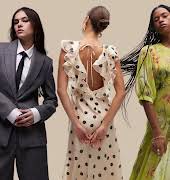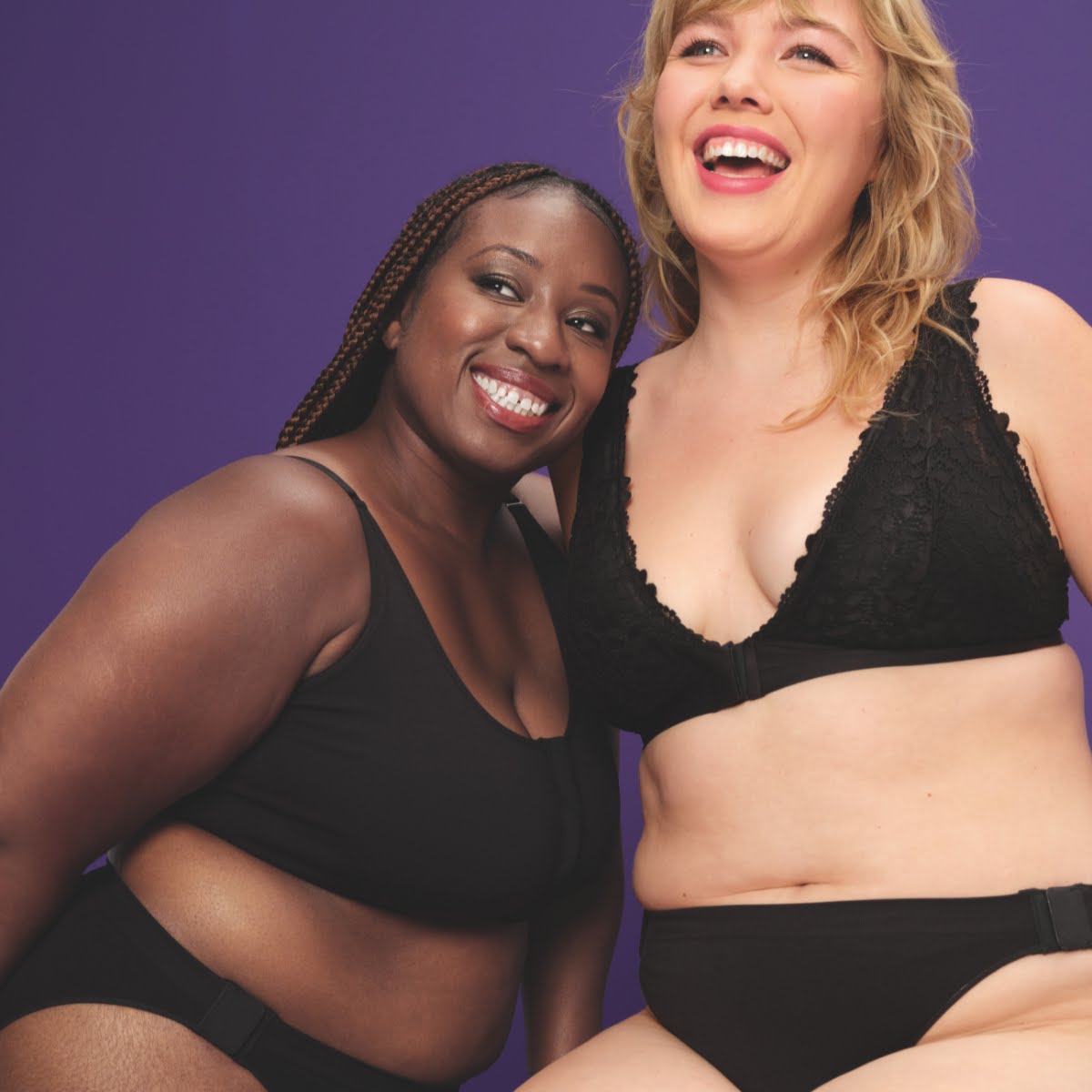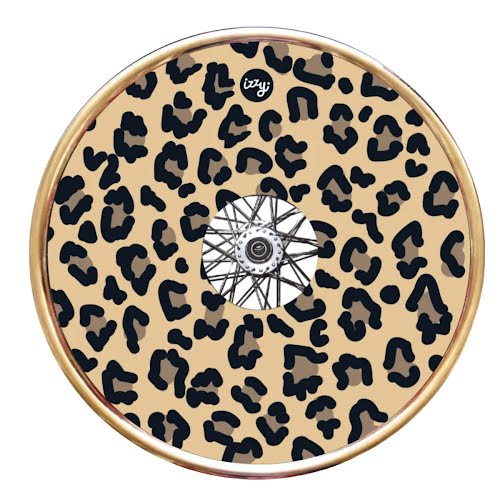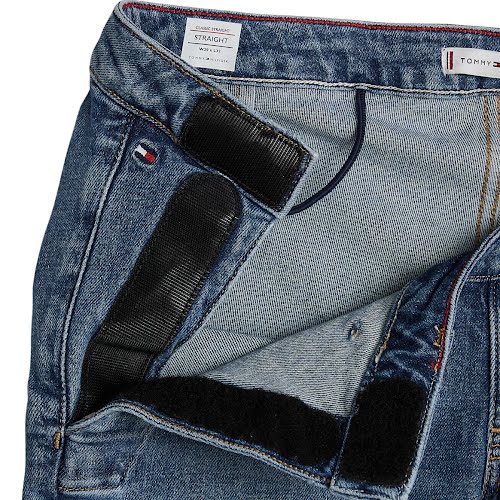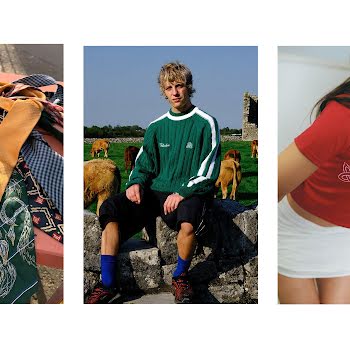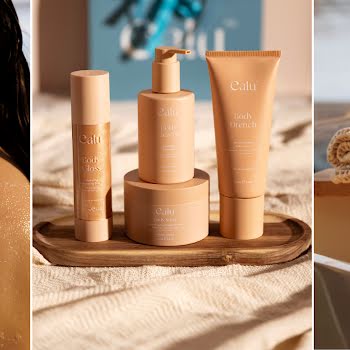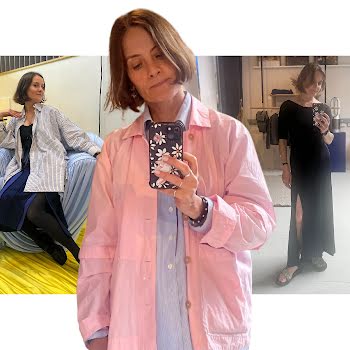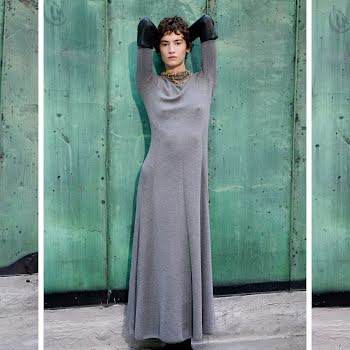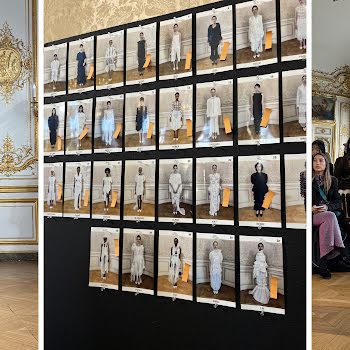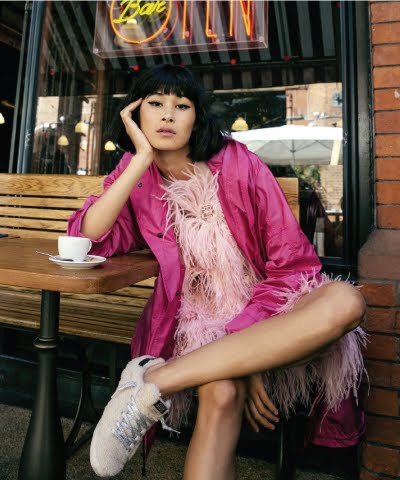
Adaptive fashion: ‘One in five Irish people identify as disabled — why is fashion so behind?’
In Ireland, more than one in five people identify as disabled. So why doesn’t the fashion industry cater more for the disabled community? Sarah Macken lifts the lid on the untapped adaptive fashion market.
We live, arguably, in a time where fashion has never been so diverse. The industry’s public-facing persona has had to change massively to keep up with the seismic societal shifts of the last decade. According to the inaugural DEI (diversity, equity and inclusion) report published by The British Fashion Council in April, 43 per cent of models were ethnically diverse in advertising campaigns in 2022, compared with 9 per cent in 2012.
While these are positive strides, some could be perceived as merely superficial; a good PR job by an industry that is masterful at metamorphosing to fit the mould of what’s current. In the same report, when asked if the fashion industry is lacking in diversity, a figure of 14 per cent of white men stated yes, compared with 54 per cent of women of colour and 49 per cent of people with disabilities. Indeed, for those living with disabilities, there is a long way to go towards inclusion.
In the 2022 census, more than one million Irish people identified as having a long-lasting condition/difficulty or disability. And yet, the clothing options for those with disabilities are at best limited, at worst dire. According to research done by Primark and the Research Institute for Disabled Consumers in the UK, while three in four disabled people state adaptive clothing – that is, clothing and accessories that have been designed for disabled people – is essential to or significantly improves their quality of life, only a quarter currently wear it. Equally, over one third find adaptive clothing very expensive, and a quarter opt to buy non-adaptive clothing and alter it for their needs instead. The message rings clear: consumers are diverse, but the products, marketing campaigns – or indeed, the workforce within those companies or the people at decision making level – aren’t.
What constitutes adaptive fashion? These accessible products blend functionality and practicality and include, but aren’t limited to: sizes suitable for little people; user-friendly designs with easy, front-facing closures for ease of dressing; clothing tailored for wheelchair users, or those with mobility devices, or prostheses; as well as sensory-friendly fabrics for reduced sensory stimulation and increased comfort.
The clothing needs of someone with a disability are vast and nuanced. “Fastenings are big things – buttons and zips. If you’ve any impairment with your hands, magnetic buttons are amazing,” explains Ailbhe Keane, founder of Izzy Wheels, a company that creates colourful wheel covers for wheelchairs. Keane’s younger sister Izzy, who was born with spina bifida, and is a brand ambassador for the company, as well as a disability advocate, inspired her to start the business: as a child she would decorate Izzy’s wheelchair for special occasions.
“When my wheelchair was decorated with lots of colour, people would approach me really differently and the whole scariness and stigma around the chair was completely broken down,” recalls Izzy, who is now 27 years old. What started as a final year project for a Visual Communications degree at NCAD turned into an overnight sensation. In 2017, a video of Izzy modelling Ailbhe’s wheel covers soon went viral, racking up nearly three million Facebook views in one day. The brand has since collaborated with brands such as Disney and Mattel, and has been profiled in British Vogue.
For Ailbhe and Izzy, shopping is something they do together. Izzy’s favourite pieces? Those that involve jaunty colours, bold patterns and lots of pink. However, as options are slim, Izzy often purchases pieces from mainstream ranges that Ailbhe adapts. “Jackets are difficult to buy as they are often too long. A trench coat, say, would be very difficult to get on and off. Items that are wide and cropped on top often suit best,” Ailbhe says. Equally, fabrics that absorb stains prove difficult for wheelchair users. “Sleeves rub against the wheels of a wheelchair so they dirty quickly: cheap fabrics are almost wear-once and they’re ruined,” she says. In addition, even in 2024, the layout and changing rooms of many bricks-and-mortar retail stores makes for a challenging shopping experience.
There are some fashion brands making strides, however. German e-tailer Zalando has been quietly leading the charge, stocking a range of adaptive women’s and men’s clothing since 2022, a childrenswear collection launched this summer, too. In June of this year, it also branched out into a 14-piece sportswear collection, available through onsite labels Pier One Sports and Even&Odd Active. Meanwhile, Skims, the Kim Kardashian-founded brand with viral body-skimming basics, boasts an adaptive capsule as part of its Fits Everybody range that includes an adaptive scoop-neck bralette with a hook and eye front closure to aid accessibility of dressing (€38, skims.com), in the trademark Skims colourways of clay, sienna, cocoa and onyx.
In a similar vein (could it be the Kardashian effect?) Penneys debuted a four-piece adaptive lingerie collection in January of this year, the first of its kind in the business (it’s available at stores in Mary Street, Blanchardstown, Swords and Dundrum) with more to follow. The collection features a seam-free bra as well as underwear with magnetic closures; it also includes period pants. With a starting price of €10, it’s a boon for adaptive pieces that are accessible.
The lace bralette, €12, is notably pretty, something which (unfortunately) can be a rarity in adaptive ranges. As Ailbhe notes, finding footwear can be bleak: “A lot of styles are very orthopaedic – not what you want!” While many ranges are still in their infancy, the reality is that much adaptive wear is heavy on function, light on style kudos. “You want clothes that are fashionable and well-designed rather than something that looks like it was specifically designed for a wheelchair. The magic lies in creating something that everybody would want to wear,” Ailbhe says.
While the big hurdle spoken about may be getting adaptive fashion into the mainstream, there’s another thing being forgotten about: allure. Firstly, it’s about finding clothes fit for purpose, but what about clothes that speak volumes to a personal aesthetic with the swirl of a hand-drawn pattern, the zing of a ruffled shoulder, or the insouciance of a simple white shirt? Surely, they shouldn’t have to be mutually exclusive concepts? As disability advocate Sinéad Burke mentioned in her 2017 TED Talk titled “Why design should include everyone”, it’s difficult to find garments that reflect your personality in the childrenswear department (Burke has achondroplasia, a form of dwarfism).
“I want shoes that reflect my maturity, professionalism and sophistication. Instead, I’m offered sneakers with Velcro straps and light-up shoes,” she says. After all, design greatly impacts our lives. It’s a powerful tool that can make us feel included in the world. On the other hand, it has the ability to nudge a minority further towards the fringe. There’s no greater let down than when a brand gets over the first hurdle only to fail spectacularly on the jump.
“To find the brand hasn’t put the same time and love into the colour choice or patterns as it would something from the standard collections is disappointing,” Ailbhe explains. “It’s hard to escape the pitfalls of standard black or beige.”
Indeed, it’s yet another failing that we don’t mention adaptive fashion and personal style in the same breath, as if the two couldn’t possibly be inherently intertwined. This is a theme author Lottie Jackson explores in her powerful memoir See Me Rolling, published by Penguin. “I’ve always believed my personal style is one of the most powerful ways to disrupt any stigma around disability, it’s a form of armour that expresses who I am in a society that fears physical imperfection. As someone who has a muscle weakness disability which affects my physical strength, I know first-hand how our clothes can act as a protective shield that allows us to shape how we’re perceived,” she says.
Are disabled bodies still taboo in luxury fashion? As it stands, high-end brands are doing little to engage with or entice the spending power of the disabled community. This blind spot is not just an imprudent financial oversight, it’s part of the perceived fragility the media bestows upon the disabled community, whether it’s in the workplace or as a community with spending power, says disability activist and TV presenter Paddy Smyth. In 2019, Smyth presented the RTÉ 2 series The Fitting Room, which helped shoppers with blindness, obesity, down syndrome and dwarfism to source their dream (bespoke) garments.
His BBC documentary Should I Be Fixed?, which explored the scientific advances available to “fix” his cerebral palsy (and posed the question, should he want to?) was thought-provoking, and he also consults with international companies such as Google and Kennedy Wilson on inclusion in the workplace. “It’s across the board in the lack of disability-led TV programmes, campaign, clothes: it’s an untapped market,” he says. What we get wrong about adaptive fashion is how we view it. “We look at it like it’s going to ‘ruin’ the garment or change the garment. The goal is brands making adaptive fashion where people who are able-bodied would want to wear it too,” he says.
There’s a way to go, however. “Right now, adaptive fashion isn’t perceived to be luxurious. I don’t imagine there are marketing teams in high-end fashion brands thinking about how to do adaptive pieces because the disabled community isn’t seen as cool. It’s only when a cultural shift happens that they will take notice, like the way corporations now embrace Pride month,” Paddy says. Only a holistic approach of hiring people from the disabled community at every level of a fashion brand – from models to creative decision-makers, designers to CEOs – will trigger genuine change over tokenism. “For me, real progress stems deeper,” Lottie says. “This includes the rise in adaptive wear or employment schemes that get more disabled people into the industry. When disability is accommodated by retailers, designers, employers and educators across the fashion landscape, that’s when we’ll see more consistent representation in campaigns.”
“Imagine if someone highly influential like Victoria Beckham got behind it. At the minute, great work is being done by disability activists but we need allies, we need people who aren’t disabled championing it and bringing it to the mainstream: we need it to come from the top down,” Paddy says. One starting point, Izzy points out, is startlingly easy. “It’s not a permanent fix but if I could just see [in e-commerce images] what clothes look like when a model is sitting down. It would make a huge difference, as a wheelchair user, in terms of knowing if something would suit me,” she says.
The last few seasons have seen an increase in designers using disabled models on the runway. See: brands like Collina Strada and Irish designer Sinéad O’Dwyer, whose SS23 runway collection featured a wheelchair-user modelling a Barbie pink cut-out blouse and matching bejewelled flats: joyful. “Adaptive fashion is different to fashion shows,” reminds Paddy. “Shows are just one garment, one person, but adaptive fashion is a whole line of adapted wear,” he says. In other words, it’s trading lip service for tangible action. One collection that gets mentioned is Tommy Hilfiger’s Tommy Adaptive range. Its sophisticated striped shirt dresses are quintessential Americana dressing, replete with magnetic fastenings and comfort-first elasticated waistbands, while the blue straight-leg jeans are modified for seated wearers with elasticated pull-up loops. While Lottie praises Nike’s FlyEase adaptive technology as “revelatory”. “The whole trainer opens up via a concealed side zip, allowing me to effortlessly slip my foot in,” she says.
Given fashion’s tremendous power to influence social trends and to infiltrate the cultural sphere, there within lies a huge opportunity – and responsibility – for positive change. “Disability is the minority that’s always put on the back foot, but it’s the one minority that anyone could become a part of: as we get older we may need crutches or a wheelchair,” Paddy says. In terms of what needs to change, it’s more than visibility and availability, it’s about desirability. Why not empower disabled consumers through clothing that’s fit for purpose and sparks joy? “I think society has a hard time seeing a disabled person as a desirable person,” he observes. “How amazing would it be to see a disabled person in a fashion campaign and say, ‘I want to be as cool as them.’ That’s what needs to happen.”
This article originally appeared in the Autumn 2024 issue of IMAGE Magazine.








